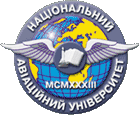Context and integrated knowledge-oriented support for decision-making
DOI:
https://doi.org/10.18372/2073-4751.67.16205Keywords:
integrated knowledge-oriented support, decision-making system, context, transdisciplinarity, ontologyAbstract
Modern solutions to applied problems are the result of combining and integrating knowledge. The combination of knowledge is the basis for a better understanding of the essence of processes and the generation of ideas for solving sets of interrelated problems in different subject areas. Each of these tasks has its own specific characteristics associated with diversity, multidimensionality, multilevel knowledge.
In many knowledge-oriented situations, professionals often use a large amount of specific knowledge and this determines the need to build a model for a common understanding of the problem, which often does not exist in advance, but develops gradually and together in the process of finding solutions.
The aim of the study is to present a transdisciplinary and context-oriented model of decision support. The paper shows that transdisciplinarity allows us to consider the decision-making process taking into account interdisciplinary relations within the decision-making system without strict boundaries between relevant disciplines or problem areas.
The actuality of the decision-making approach based on interdisciplinarity, multidisciplinarity and transdisciplinarity and context is shown. Requirements for integrated decision support are defined.
Integrated technologies defined through /inter- /multi- /trans-discipline are presented.
The context ontology and its components are defined. The usage of context and context ontology allows, without directly affecting the logical conclusion, to be limited only to rules/procedures relevant to the context.
A layer ontology, which provides concepts and constructions to define, understand, structure and present static and dynamic features of the four-layer decision-making process (problem, model, method and realization) is presented.
An aspect ontology, which provides concepts and constructions to define, understand, structure and present entities from a set of defined aspects (points of view, perspectives) is presented.
References
Палагин А.В. Трансдисциплинарность, информатика и развитие современной цивилизации // Вісник НАН України. – 2014. – № 7 – C. 25-33.
Nicolescu B. Transdisciplinarity. Theory and Practice. – Cresskill, NJ: Hampton Press, 2008. – 320 p.
Piaget J. The epistemology of inter-disciplinary relationships // In Briggs A et al., editors. Interdisciplinarity. Problems of teaching and research in Universities. – Paris: OECD, 1972. – P. 127-139.
Hinton A. Understanding Context: Environment, Language, and Information Architecture // Sebastopol, CA: O’Reilly Media, Inc. – 2014. – 440 p.
Lawrence R., Despres C. Futures of Trandsciplinarity // Futures. – 2004. – P. 397-405.
Чаплінський Ю.П. Онтологічні складові підтримки прийняття управлінських рішень // Наукові праці НУХТ. – 2013. – № 48. – С. 65-68.
Bazire M. Understanding Context Before Using it / M. Bazire, P. Brézillon // In: Dey, A. et al. (eds.) CONTEXT 2005, LNAI 3554. Berlin Heidelberg: Springer-Verlag. – 2005. – P. 29-40.
Чаплінський Ю.П. Онтологія та контекст при розв’язанні прикладних задач прийняття рішень / Ю.П. Чаплінський, О.В. Субботіна // Штучний інтелект. – 2016. – № 2. – С. 147-155.
Downloads
Published
Issue
Section
License
Автори, які публікуються у цьому журналі, погоджуються з наступними умовами:- Автори залишають за собою право на авторство своєї роботи та передають журналу право першої публікації цієї роботи на умовах ліцензії Creative Commons Attribution License, котра дозволяє іншим особам вільно розповсюджувати опубліковану роботу з обов'язковим посиланням на авторів оригінальної роботи та першу публікацію роботи у цьому журналі.
- Автори мають право укладати самостійні додаткові угоди щодо неексклюзивного розповсюдження роботи у тому вигляді, в якому вона була опублікована цим журналом (наприклад, розміщувати роботу в електронному сховищі установи або публікувати у складі монографії), за умови збереження посилання на першу публікацію роботи у цьому журналі.
- Політика журналу дозволяє і заохочує розміщення авторами в мережі Інтернет (наприклад, у сховищах установ або на особистих веб-сайтах) рукопису роботи, як до подання цього рукопису до редакції, так і під час його редакційного опрацювання, оскільки це сприяє виникненню продуктивної наукової дискусії та позитивно позначається на оперативності та динаміці цитування опублікованої роботи (див. The Effect of Open Access).

